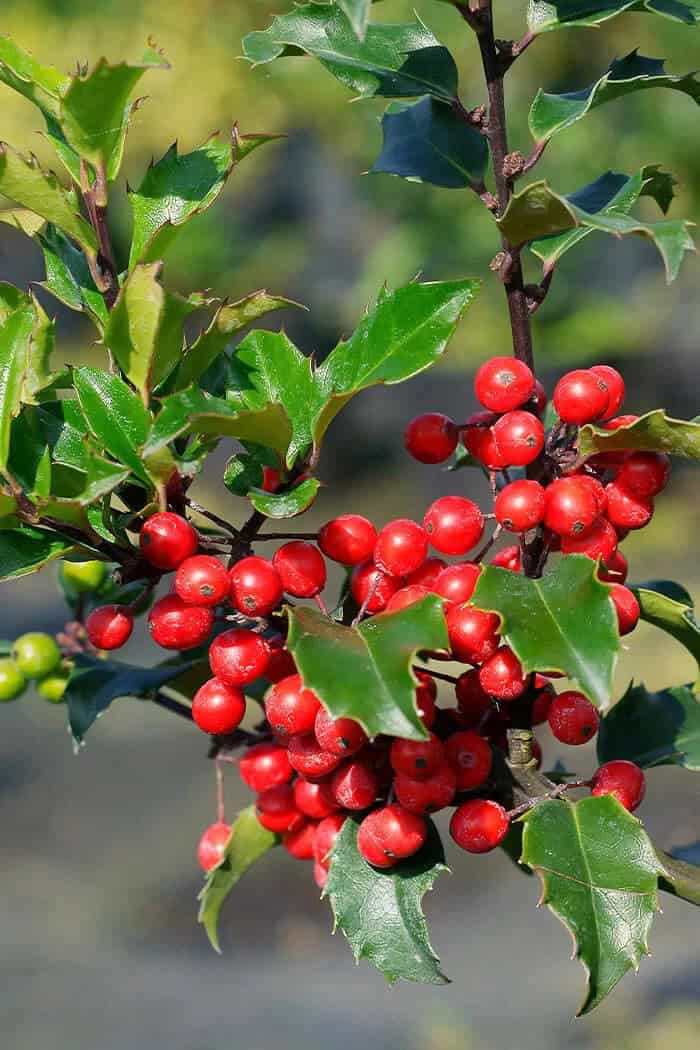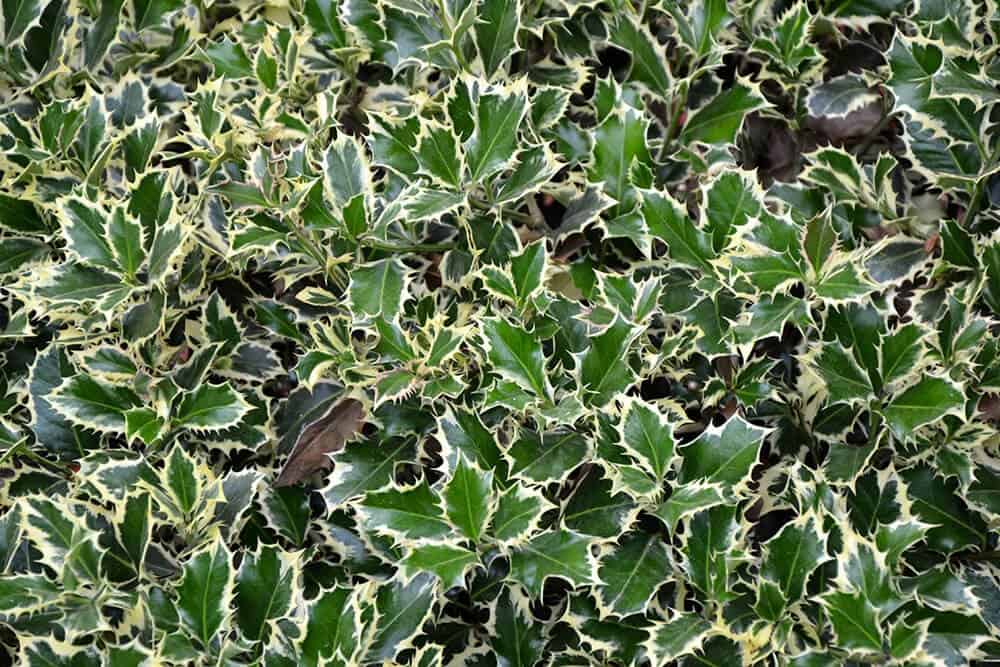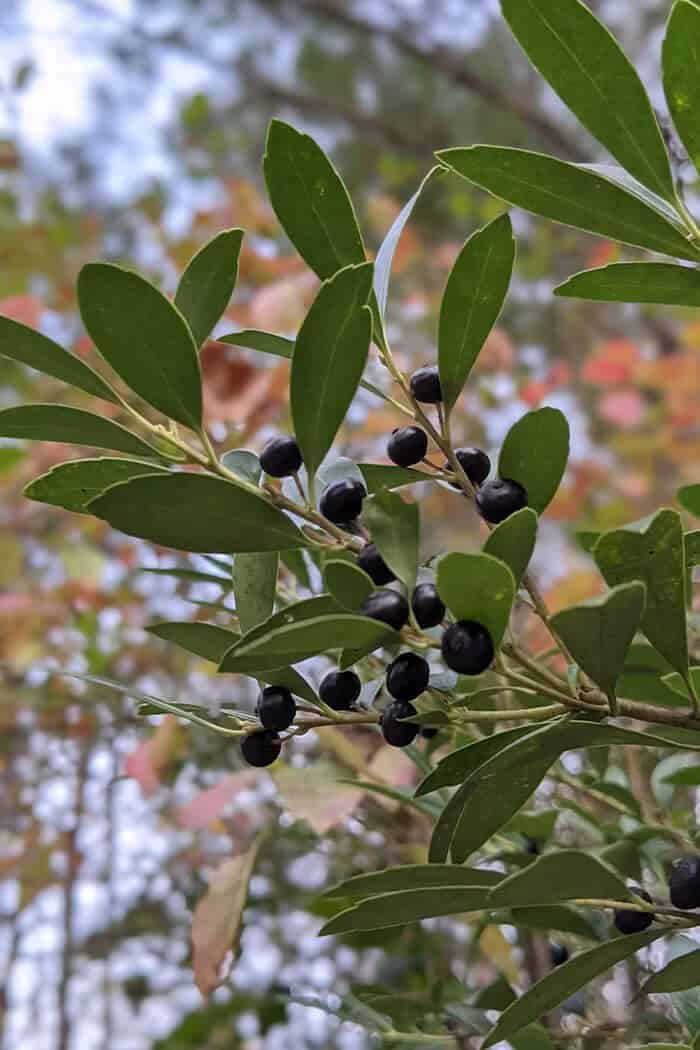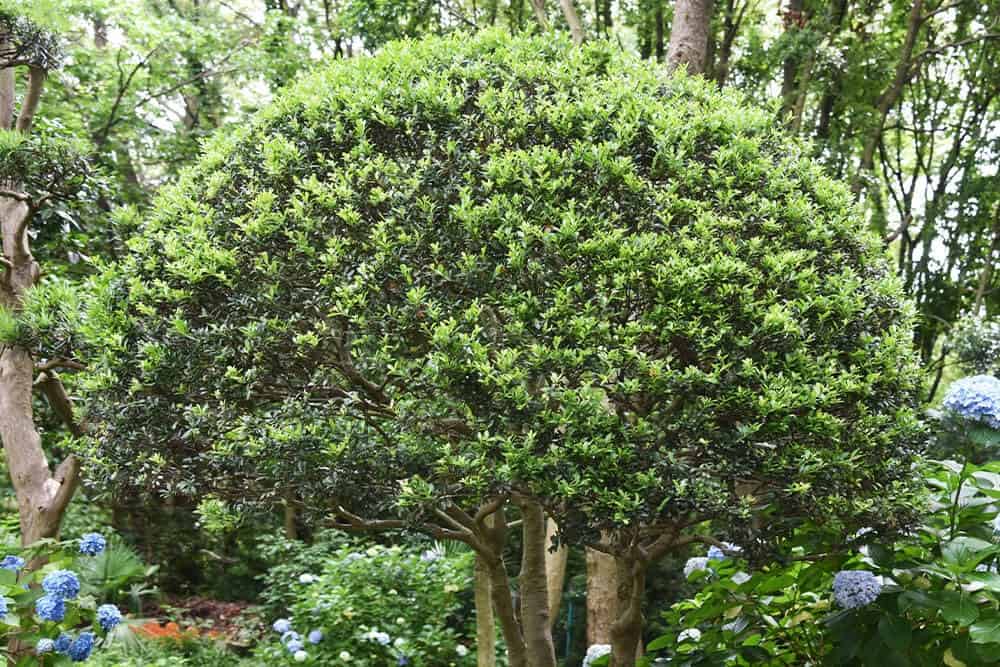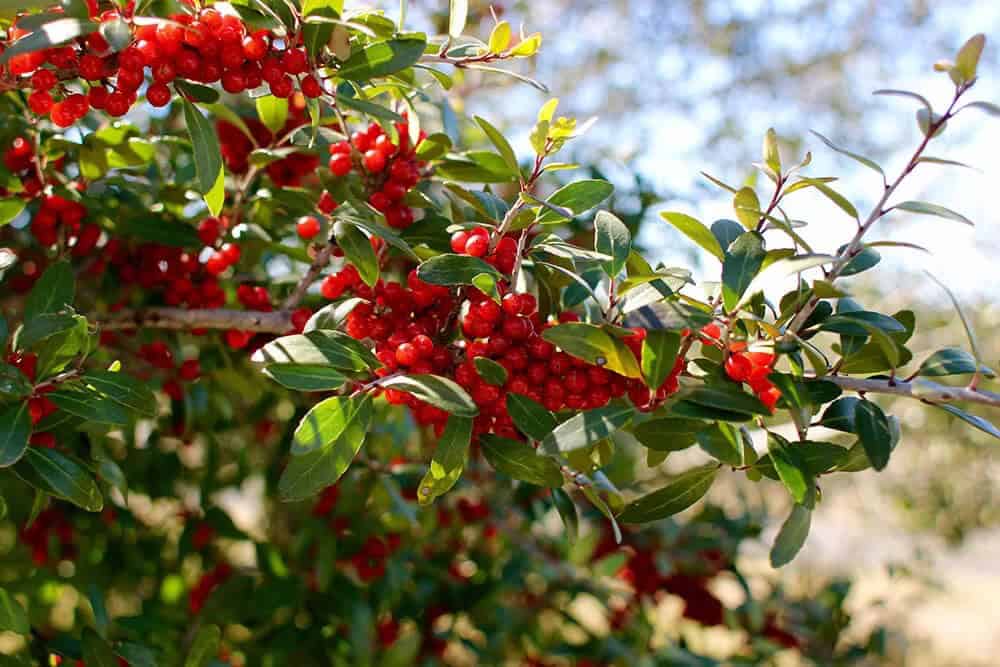While holly branches and berries are often used to add festive flair to home decor during the winter holiday season, these plants have far more to offer than just seasonal decoration. Holly plants bring immense value to the landscape, and their versatility is only matched by the many forms they come in. In fact, there are numerous valuable holly shrubs and trees that often go overlooked when gardeners select plants for their yards.
To help bridge this knowledge gap, we’ve compiled a list of the best holly plants around. As you read through our selection, you’ll not only gain insight into various types of holly but also discover which one is best suited to your needs. Each plant on our list will be accompanied by a brief description highlighting its unique features and growth requirements. As you explore these descriptions, you may notice that certain themes emerge repeatedly – we’ve outlined these key takeaways below.
Key Takeaways
All holly species belong to a single genus, Ilex, which encompasses an array of fascinating characteristics. One of the most striking features of these plants is their exceptional foliage, serving as a primary ornamental attraction. Beyond their visually appealing leaves, many popular holly varieties boast vibrant fruits that persist throughout the winter months, adding an extra layer of beauty to their appeal.
Interestingly, holly plants can take on various forms, ranging from tree-like structures to shrubs, depending on the specific species and care received. Furthermore, certain holly species are better suited for specific regions within the United States, underscoring the importance of selecting the right variety for your local climate.
12 Diverse Types of Holly Plants that You Might Not Have Heard of
American Holly (Ilex opaca)
The quintessential American holly takes center stage as our inaugural entry. This classic holly is deeply ingrained in US culture, and it’s easy to see why – its unique blend of spiky and glossy leaves, coupled with clusters of vibrant red berries, makes it a timeless favorite. While other hollies may differ in shape and appearance, the American holly remains an iconic choice that refuses to fade from popularity.
Blue Holly (Ilex x meserveae)
In stark contrast to other hollies featured on our list, the blue holly stands out as a hybrid species that emerged through deliberate cultivation. Botanically classified as Ilex x meserveae, this unique shrub boasts a distinct foliage coloration – rather than the typical green hue, its leaves display a pronounced blue tint.
Moreover, the vibrant red berries characteristic of many hollies are also present in this variety, allowing it to create striking visual contrast without the need for accompaniment from another plant.
Carolina Holly (Ilex ambigua)
While the distinction between trees and shrubs can be murky, the Carolina holly presents an interesting case. Its growth habit is reminiscent of a Christmas tree, with a tall pyramidal shape when mature. However, it diverges from other holly species in several ways. One notable difference lies in its leaf morphology: while still pointed, the leaves of the Carolina holly are more rounded than those of many other holly types.
Chinese Holly (Ilex cornuta)
While ornamental value is a hallmark of many holly species, Chinese holly stands out for its exceptional foliage. Its leaves are characterized by their sharpness, glossiness, and unique square shape, setting them apart from other options in this group. Furthermore, scattered throughout these rigid leaves, you’ll find clusters of red berries that, although slightly paler than those found on other holly shrubs, remain stunningly attractive nonetheless.
Dahoon Holly (Ilex cassine)
The dahoon holly is an unmistakable choice among holly options, with a growth habit that sets it apart from others. Notably, this plant develops a prominent main trunk, a characteristic uncommon in most hollies. This sturdy trunk supports a rounded canopy with slightly irregular edges, giving the dahoon holly a distinctly tree-like appearance as opposed to a shrub.
Its leaves are another notable feature – rounded and elongated, they cluster together in loose groups around equally attractive clusters of light red berries.
European Holly (Ilex aquifolium)
The European holly, scientifically known as Ilex aquifolium and also referred to as English holly, bears striking similarities to its American counterpart when it comes to foliage and fruit production. A notable shared trait is the presence of glossy leaves featuring multiple sharp points along their margins.
Furthermore, both species produce vibrant red berry clusters that provide a pop of color during the winter months, a time when many plants are in a dormant phase and devoid of visual appeal.
Hedgehog Holly (Ilex aquifolium ‘Ferox Argentea’)
While the blue holly may be a naturally occurring species, the hedgehog holly stands out as a cultivated variety that has been carefully bred for its unique characteristics. One of the most striking features of this holly is its foliage, which boasts an impressive display of bright yellow spikes against a lush green background. This combination gives the hedgehog holly’s leaves a vibrant, eye-catching quality that sets it apart from other species within the holly family.
In fact, the hedgehog holly is one of the few hollies that incorporates shades of yellow into its natural color palette, making it a standout choice for gardeners and nature enthusiasts alike.
Inkberry (Ilex glabra)
While other hollies may receive more attention, we firmly believe that the inkberry shrub is often overlooked despite being a truly remarkable plant. Its understated beauty and unique characteristics make it a standout in its own right. For instance, the inkberry’s dark black fruits are not only visually striking but also provide sustenance for local wildlife, making it an important part of its ecosystem.
Furthermore, the small rounded leaves and compact growth habit of the inkberry make it a desirable addition to any garden or landscape.
Japanese Holly (Ilex crenata)
The Japanese holly is a highly sought-after option among the many types of holly, alongside the American holly. Its leaves are distinctive for being small, curved, rounded, and extremely glossy. One of the attractive features of this type of holly is its responsiveness to pruning, which allows for creative shaping and trimming into various forms. Many people opt for a spherical shape, while some varieties take on a strikingly narrow and upright form.
Longstalk Holly (Ilex pedunculosa)
The longstalk holly’s unique appearance sets it apart from other hollies, with its fruits dangling individually from long stems rather than forming dense clusters. The plant’s leaves are also distinct, featuring a pointed oblong shape that doesn’t resemble typical holly leaves. During the blooming period, longstalk holly produces tiny light green flowers that emit a sweet fragrance, further distinguishing it from other options on this list.
This pleasant scent is just one way in which the longstalk holly showcases its distinctive character.
Winterberry (Ilex verticillata)
Winterberry shrubs diverge from the norm among popular holly species by retaining their vibrant character during the winter months. While most broad-leaved evergreen hollies maintain their foliage year-round, the winterberry’s deciduous leaves fall away, revealing some of the most resplendent red berries imaginable. This distinctive feature is the plant’s namesake and primary ornamental attraction.
Furthermore, these winter fruits serve as a vital food source for birds during a time when few other options are available. In contrast, the shrub’s lush deciduous foliage fills out its natural irregular yet rounded silhouette throughout the remainder of the year.
Yaupon Holly (Ilex vomitoria)
The Yaupon Holly stands out for its adaptability and practicality. Its ability to grow in a tree-like shape or with a loose canopy makes it an excellent choice for gardeners with limited space. Moreover, dwarf varieties of this plant can thrive in compact spaces, making them perfect for small gardens. One of the most notable features of the Yaupon Holly is its abundant production of red fruit clusters, which can be quite dense as they grow close to the shrub’s bark.
Frequently Asked Questions About Holly Plants
What is the Best Holly Plant?
While personal taste ultimately plays a significant role in determining the best plant for a particular category, certain types of hollies have gained more widespread recognition than others. This doesn’t imply that these popular options are inherently superior to their lesser-known counterparts; rather, they serve as an excellent starting point for those new to growing hollies.
The American holly, winterberry, Japanese holly, and European holly are among the most celebrated species within this group, yet it’s essential to note that numerous other varieties offer comparable value in terms of landscape design.
What is the Difference Between Japanese Holly and Holly?
While both a Japanese holly and a regular holly belong to the Ilex genus, they are distinct species within this group. A Japanese holly is a specific type of holly characterized by its round leaves and dark black berries. In contrast, many other types of hollies have red berries and more complex leaf shapes. For instance, the botanical name for the Japanese holly is Ilex crenata, highlighting its unique features.
Is a Holly a Tree or a Bush?
While the classification of holly as tree or bush is subjective, it ultimately boils down to a few key factors. Some species of holly are capable of growing quite large, blurring the lines between shrub and small tree. Furthermore, these larger hollies can take on a more treelike appearance depending on how they’re pruned and shaped. Nevertheless, for most people, hollies are generally considered to be a group of shrubs.
What is Holly Good For?
Holly plants offer a multitude of uses, extending beyond the garden into various decorative and functional applications. One of the most notable advantages is their ability to provide stunning winter décor. The glossy evergreen leaves and vibrant red fruits that emerge during the colder months make for a beautiful display when arranged in wreaths or used as garlands. Furthermore, holly plants are an excellent choice for landscaping purposes.
Their large size allows them to effectively block harsh winds and provide privacy screens, while their attractive foliage and fruit add visual interest to any outdoor space.
Is Holly Toxic to Humans?
While the vibrant red berries of holly plants may be tantalizing, it’s crucial to discourage consumption by humans, children, and pets. The truth is, these fruits are toxic, and ingestion can lead to unpleasant symptoms such as vomiting, diarrhea, drowsiness, and other complications. Therefore, it’s essential to keep a watchful eye on anyone who comes into contact with your holly plants when they’re bearing fruit.
The risks associated with consuming holly berries far outweigh any initial appeal they may hold. In reality, there’s more diversity among holly plants than initially meets the eye. Our earlier exploration of this topic is a testament to that. Nonetheless, there’s still much to be discovered about these captivating plants. That’s why we’ve taken it upon ourselves to address some of the most frequently asked questions about holly plants in the sections that follow.
12 Graceful Types of Holly Plants with Majestic Leaves and Fruits
Now that you’re familiar with various types of holly plants and their unique characteristics, you’re better equipped to make an informed decision when selecting a shrub or small tree for your yard. The distinctive fruits and foliage of these plants are certainly a major draw, but it’s also worth noting the many nuances that set different species apart from one another. By keeping these variations in mind, you’ll be more likely to find a holly plant that suits your needs perfectly.

